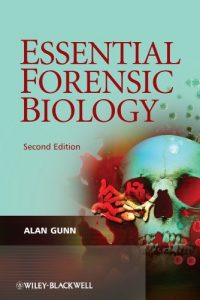The book provides an overview of the decay process and discusses the role of forensic indicators – human fluids and tissues, including blood cells, bloodstain pattern analysis, hair, teeth, bones, and wounds. It also examines the study of forensic biology in cases of suspicious death.
The coverage of molecular techniques has been expanded throughout with additional material on bioterrorism and wildlife forensics now included. The use of DNA and RNA for the identification of individuals and their personal characteristics is now covered along with a discussion of the ethical issues associated with the maintenance of DNA databases.
• Fully revised and updated new edition of this highly successful textbook.
• Includes self-assessment questions at the end of each chapter and case studies.
• Now in full colour throughout.
• Includes a supplementary website (www.wileyeurope.com/college/gunn) covering additional material and self-test questions to reinforce student understanding.
From the reviews of the first edition:
"The author does an excellent job of demonstrating how biological science can, and does, contribute to legal investigations…" THE QUARTERLY REVIEW OF BIOLOGY
"…a super book …not a book that will languish on library shelves. Buy it!" JOURNAL OF BIOLOGICAL EDUCATION
"…naturalists and biologists will find much of interest within these books…new light on the application of their own specialism..." THE NATURALIST
"Overall, I give it my highest recommendation. I was unable to find a single paragraph that was no fascinating, despite being sad or gruesome at times." E-STREAMS



